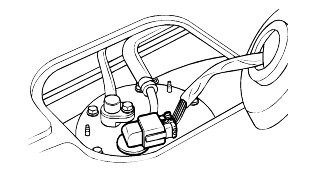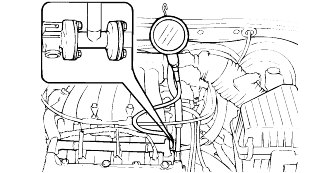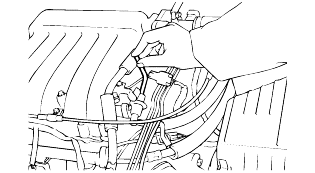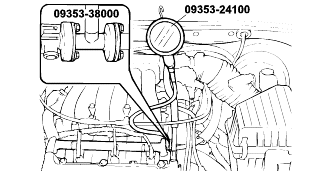Reduce the internal pressure of the fuel lines and hoses:
Disconnect the fuel pump harness connector
Start the engine and after it stalls, turn the ignition switch to the OFF position
Disconnect the battery negative (-) terminal
Connect the fuel pump harness connector






